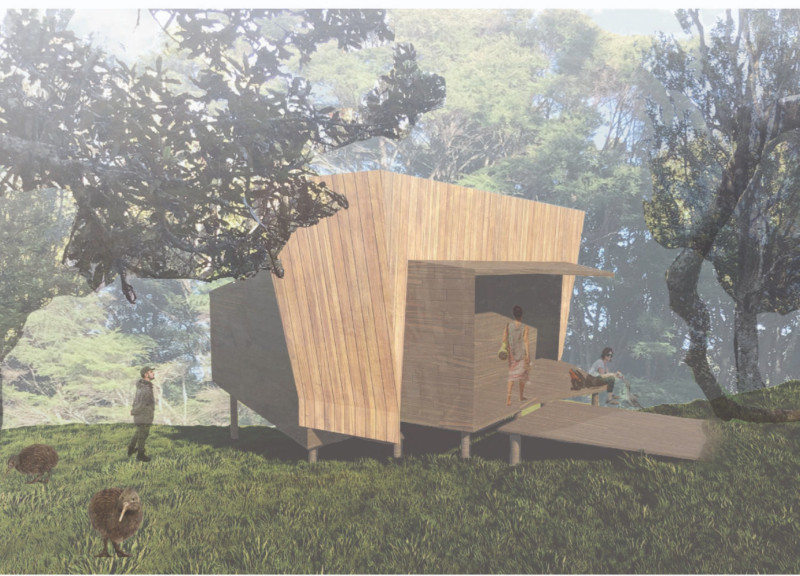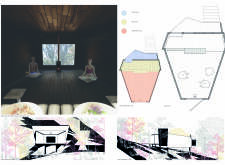5 key facts about this project
The Dhyana Cabin is designed to foster meditation and personal reflection. Situated in a landscape with six trees on a gentle slope, it draws inspiration from the Sanskrit word 'Dhyana,' which means uninterrupted concentration. The cabin creates a space that encourages a connection with nature while promoting a quiet environment for introspection and self-discovery.
Architecture Concept
The design reflects the idea that meditation is a journey inward. The cabin is elevated, allowing natural elements to flow beneath, thereby preserving the site’s ecological balance. Its layout enhances solitude and encourages a smooth transition between indoor and outdoor spaces, creating a calming setting for reflection.
Spatial Organization
The cabin is organized into three distinct levels, each serving specific functions that align with meditation practices. The entrance, accessed by a footbridge from the south, acts as a welcoming space between nature and the cabin. This threshold enhances the experience for visitors, blending the interior with the exterior landscape.
The second level features a sacred area that includes an altar for spiritual practices. The walls are tilted to capture natural light, which supports the preparation of flower essences. The altar is designed at a comfortable height, making it easy for users to interact with it during their activities, thus deepening their spiritual experience.
The third level is meant for meditation. It is spacious enough for an instructor and participants. Beginners can lean against the vertical wall space while still focusing on the instructor. The sloping roof guides users into a seated position, encouraging relaxation and enhancing concentration. A small stove is conveniently placed at the back to provide warmth during colder weather.
Design Details
Material choices are important in the cabin's construction. The entrance and meditation areas are built using charred wood from locally sourced Pinus radiata. This material creates a visual contrast with the surrounding nature. In contrast, unburned wood is used in the sacred area. This choice emphasizes its central role within the cabin.
Overall, the thoughtful arrangement of spaces, careful selection of materials, and design features create an environment that supports quiet contemplation and reflection. Each element contributes to a design that engages users while respecting the natural landscape.






















































